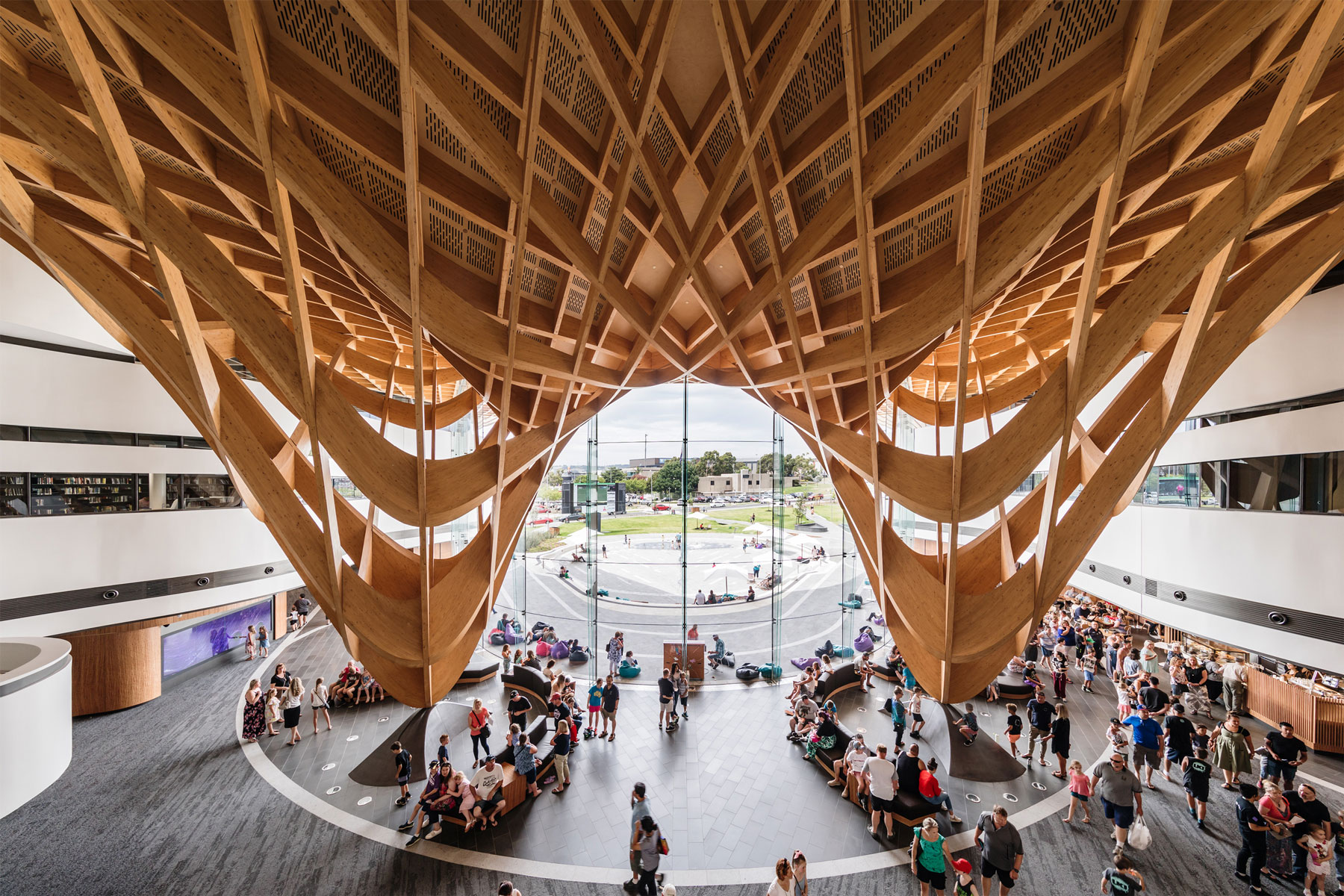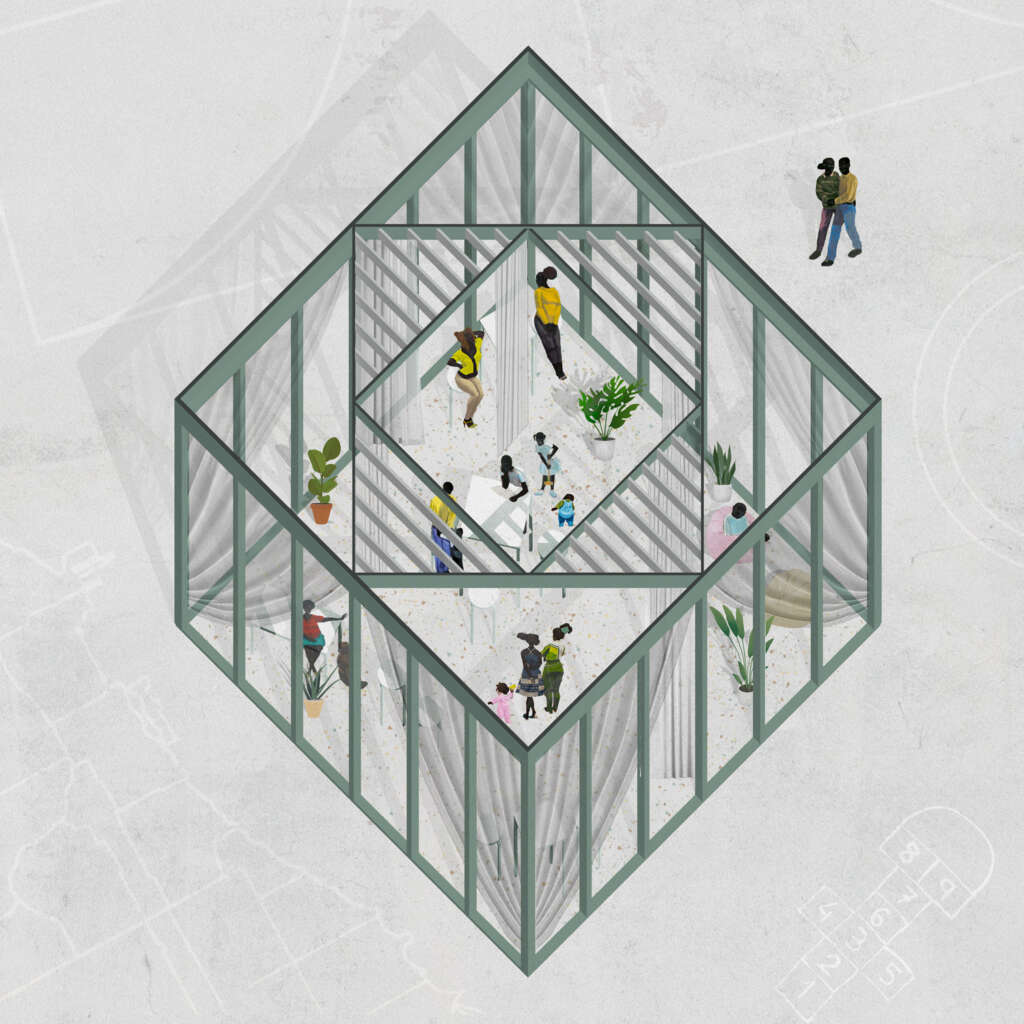
The following press release is courtesy of the Chicago Architecture Biennial. The fourth edition of the Chicago Architecture Biennial (CAB) will open to the public on September 17, responding to an urban design framework that proposes connecting community residents, architects, and designers to develop and create spaces that reflect the needs of communities and neighborhoods. Over 80 contributors from more than 18 countries will respond to this framework through site-specific architectural projects, exhibitions, and programs across eight neighborhoods in Chicago and in the digital sphere.
Curated by the Biennial’s 2021 Artistic Director—designer, researcher, and educator David Brown—The Available City will present projects and programs that ask and respond to the question of who gets to participate in the design of the city by exploring new perspectives and approaches to policies. The Available City illuminates the potential for immediate new possibilities, highlights improvisational organizers of the city, and underscores the exponential impact of small elements in aggregate.
The Biennial is free and open to the public beginning on Friday, September 17. It will be on view at sites and in locations throughout the city, activated through in-person and online programming through December 18, 2021.
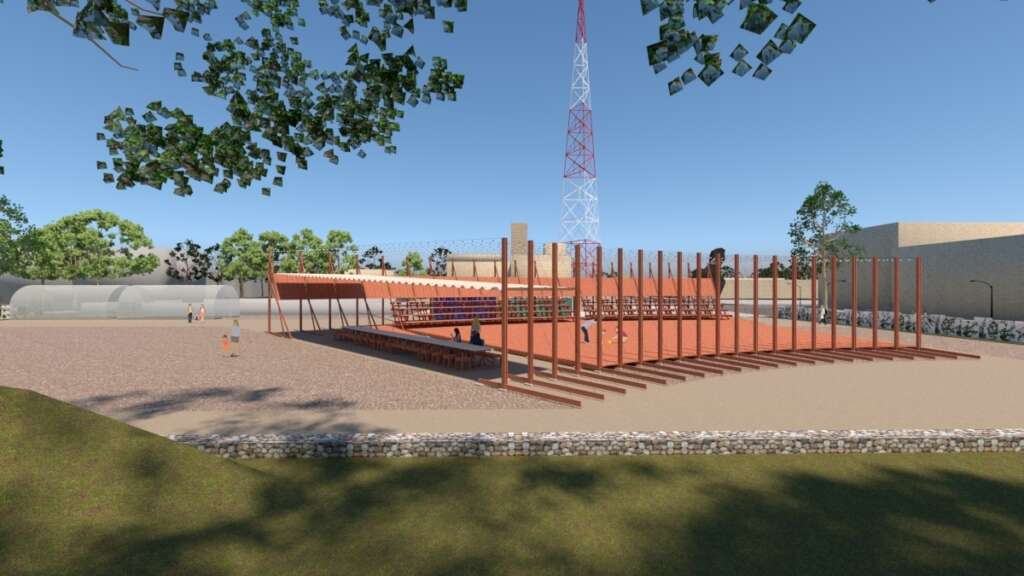
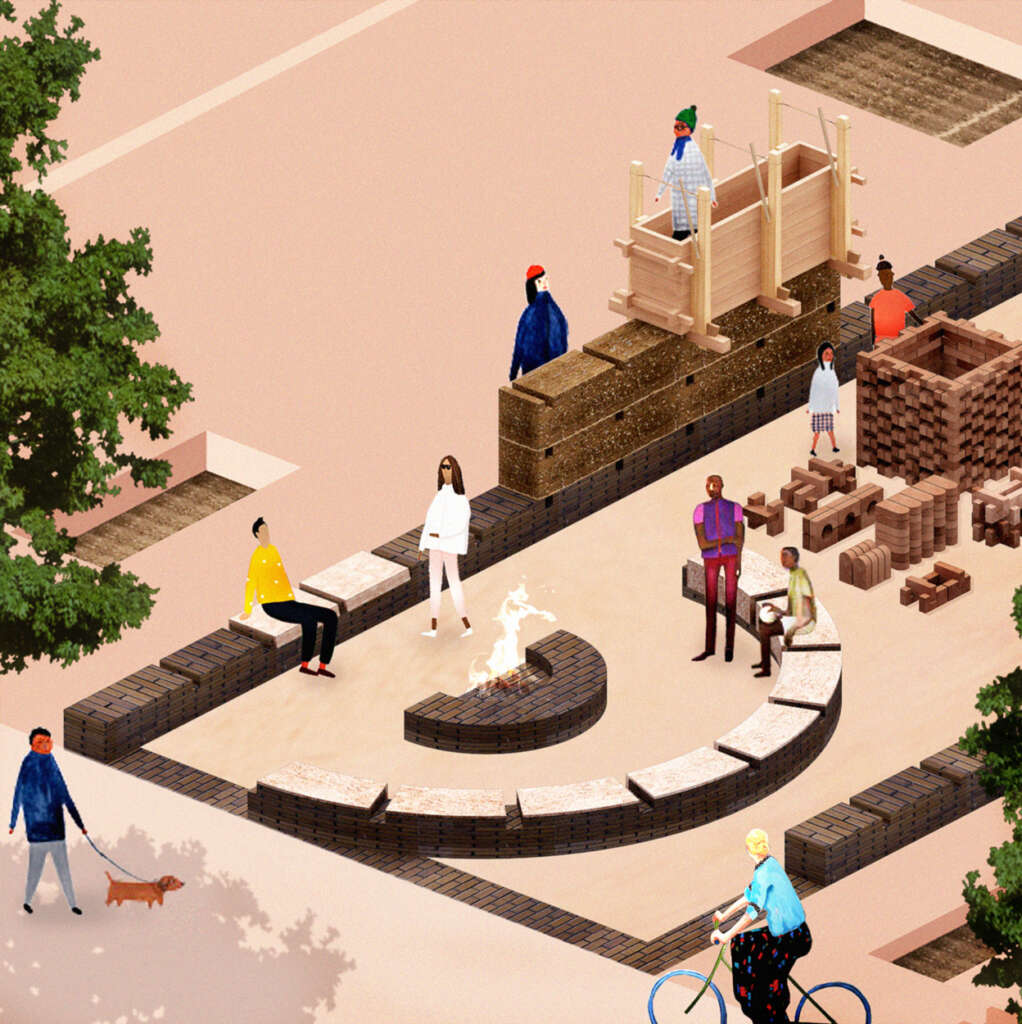
Mayor Lori E. Lightfoot commented, “The Biennial always represents a remarkable time for our city, when residents, visitors, cultural organizations, and businesses come together to explore new ideas and potential for Chicago and cities worldwide. It is inspiring to see the projects and ideas developed by Chicago residents and the contributors highlighting the potential for vacant spaces. We’re thrilled to be able to bring that conversation to a global platform.”
This fourth edition marks a new approach to the biennial model, bridging from an exhibition format to a deeper engagement with the local community and expanding the Biennial’s potential to spur on experimentation and engagement. The Available City presents ideas that highlight the potential of collective spaces—in response to the 10,000-plus city-owned vacant lots that are concentrated on the South and West Sides of Chicago in predominantly Black and Brown neighborhoods—as possible sites for community-driven design and engagement.
The Available City is the latest and most expansive iteration of an eponymous long-term project developed by Artistic Director David Brown. Inspired by the potential of vacant lots in American cities, Brown has engaged in an ongoing initiative to document, explore, and reimagine these spaces for over a decade. The 2021 Biennial continues this work, forming a dynamic and multifaceted exploration of an urban design proposal for what can become of unused space and vacant lots in the urban context through a process of community-driven design.
Artistic Director David Brown remarked, “Exploring the potential of The Available City has been a central focus for me for over a decade, and it is a fantastic opportunity to explore its ideas with global and local architects, designers, thinkers, and community leaders within the Biennial’s platform. When the Biennial opens, our work is really just beginning — the Biennial is an open conversation on possibility, and I am excited to see what ideas, collaborations, and partnerships emerge from this forum.”
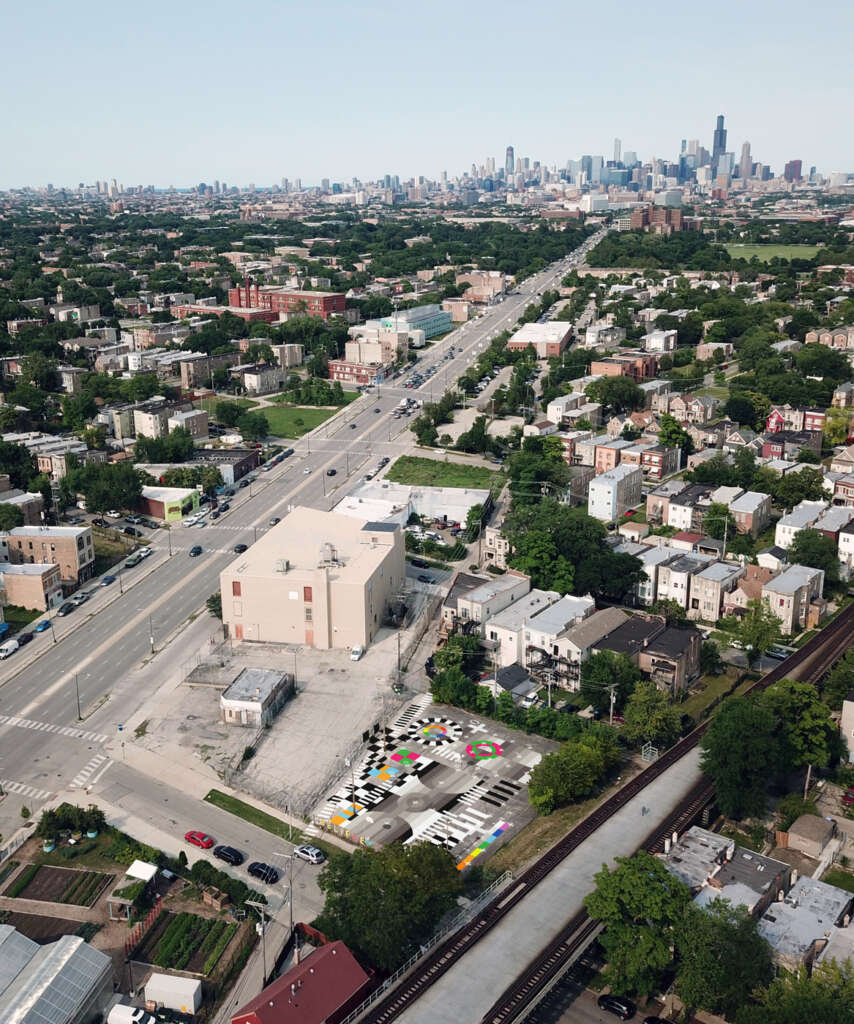
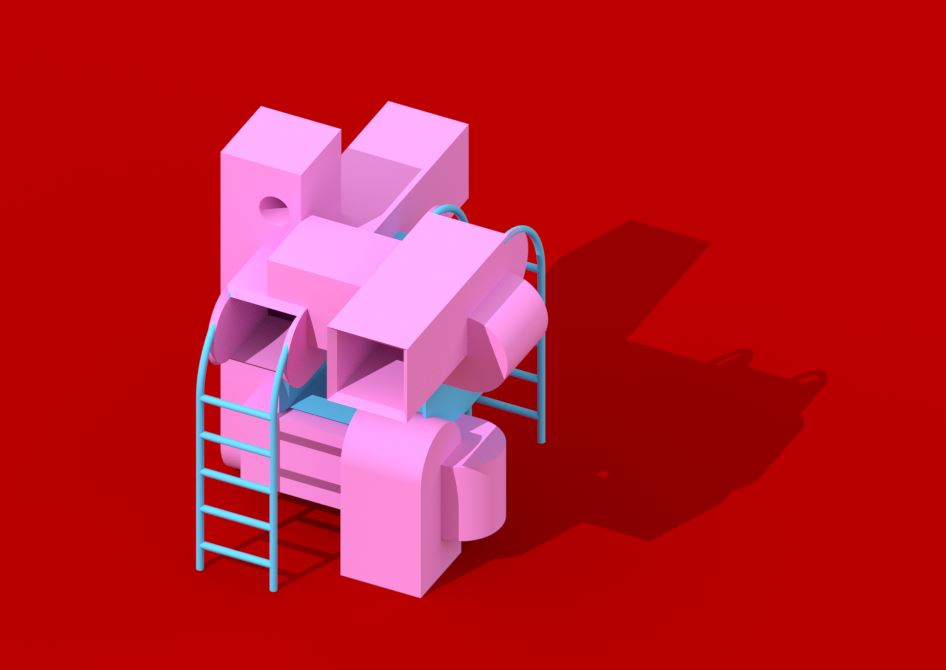
More than 80 contributors from around the world
The projects in The Available City will bring ideas for collective spaces to life through built projects, exhibitions, essays, workshops, and programs that activate neighborhood sites in ways that will engage and enhance the community experience. These explorations include:
Site-specific architectural projects: 15 of the Biennial’s commissioned projects are installations on public and private lots located in Chicago’s neighborhoods of North Lawndale, Bronzeville, Woodlawn, Englewood, Pilsen, and the South Loop. For many of these projects, Artistic Director David Brown engaged mission-driven community organizations or groups across the city, pairing them with an architect whose practice he believed was aligned with the organization’s intentions for a space, expanding upon the work these organizations were already doing to engage their community. Examples of site-specific projects include:
- Two projects on the Westside Association for Community Action (WACA) Playlot, Bell Park, were the outcome of a community workshop facilitated by Open Architecture Chicago and Freedom House with David Brown to envision the transformation of a vacant 15-block stretch under the Chicago Transit Authority Pink Line train. One of the projects in Bell Park comprises a central architectural installation designed to mimic the look and feel of the blow-up bounce houses that are staples of block parties around the country by Studio Barnes (Miami, FL), in collaboration with Shawhin Roudbari (Boulder, CO) and MAS Context (Chicago, IL); the other is an architectural-scale urban painting by Outpost Office (Columbus, OH) on the ground of the lot, which is produced with GPS-guided robots ordinarily used to paint temporary sports fields.
- On 63rd between University and Woodlawn in the Woodlawn neighborhood of Chicago, Matri-Archi(tecture) will present Reflecting Our (Global) South Side, which creates a circular outdoor meeting space with canopies and seating to provides shade and shelter for congregation, referencing the rich value of radial community planning, historically designed by communities in Sub-Saharan Africa.
- At the former Overton Elementary School in Bronzeville, which is the site of the Overton Incubator for entrepreneurship in business, technology and design, The Open Workshop (San Francisco, CA and Toronto, Canada) will present The Center Won’t Hold, an outdoor meeting space for the community defined by a series of movable curtains that can easily transform the space. The project will serve various different
purposes and accommodate various styles of gatherings, signifying the evolving practices and values of commoning.
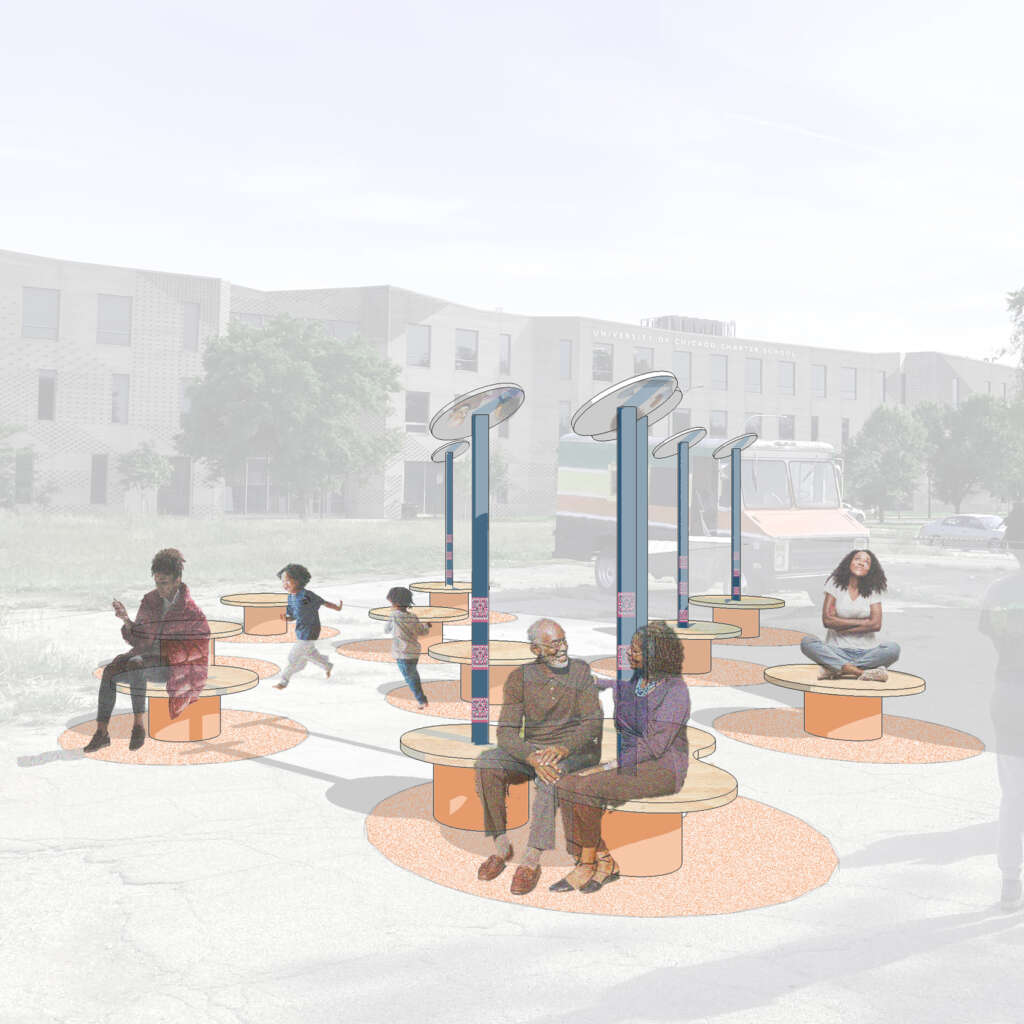
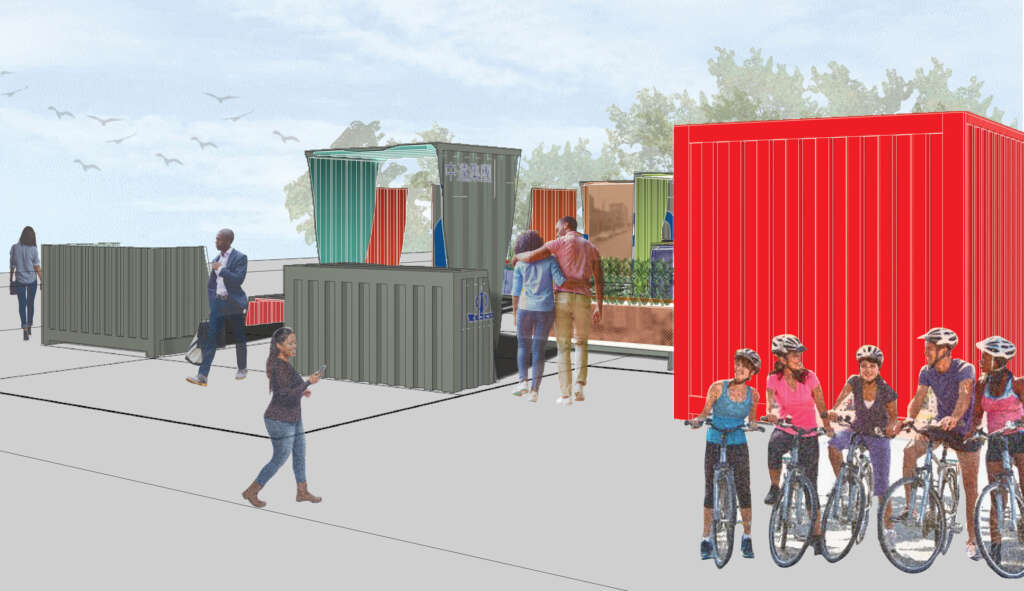
Exhibition-based explorations: The 2021 edition of The Available City is accompanied by two exhibitions, one located in an unused storefront space at the Bronzeville Artist Lofts, and the other at the Graham Foundation. The works at both venues amplify ideas and concepts of The Available City.
The Graham Foundation exhibition includes projects by Christophe Hutin Architecture (Bordeaux, France), Drawing Architecture Studio (Beijing, China), Departamento del Distrito (Mexico City, Mexico), El Cielo (Mexico City, Mexico), Enlace Arquitectura + Ciudad Laboratorio (Caracas, Venezuela), fala (Porto, Portugal), and RIFF Studio (New York, NY).
Work by Plan Comun (Paris, France), RIFF Studio (New York, NY, SHAU (Bandung, Indonesia), and Urban American City (New York, NY) is exhibited at the Bronzeville Artist Lofts.
Essays, programs, and workshops: The Biennial also commissioned essays, programs, and workshops that enact The Available City’s improvisational framework, building a pathway for an ongoing, community-driven urban design that directly engages neighborhoods and communities. Essay contributors include Jill Desimini (Cambridge, MA, Harvard University), Elleza Kelley (New Haven, CT, Yale University), Stefan Gruber (Pittsburgh, PA, Carnegie Mellon University), Rayna Razmilic (Santiago, Chile), Alexander Eisenschmidt (Chicago, IL, UIC), StudioAPT (Ann Arbor, MI, University of Michigan), and Ana Miljački (Boston, MA, MIT), among others.
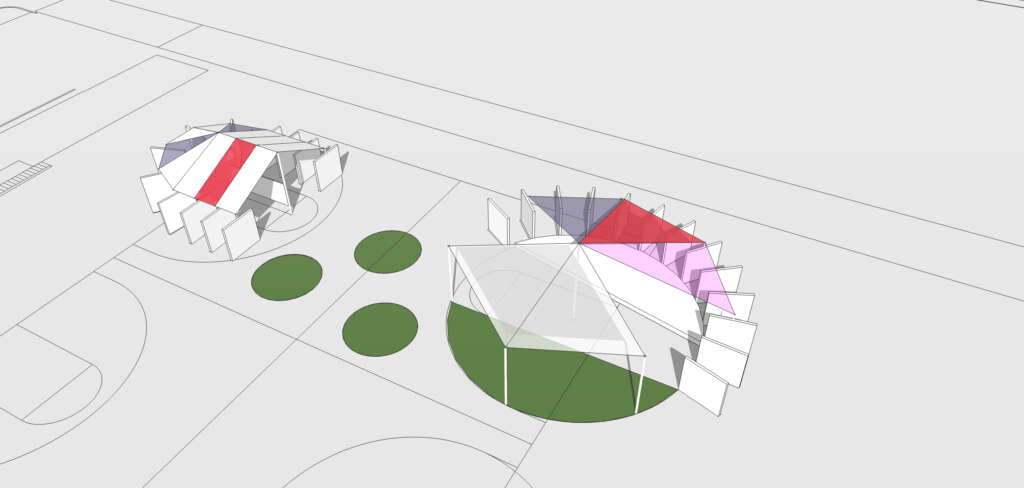
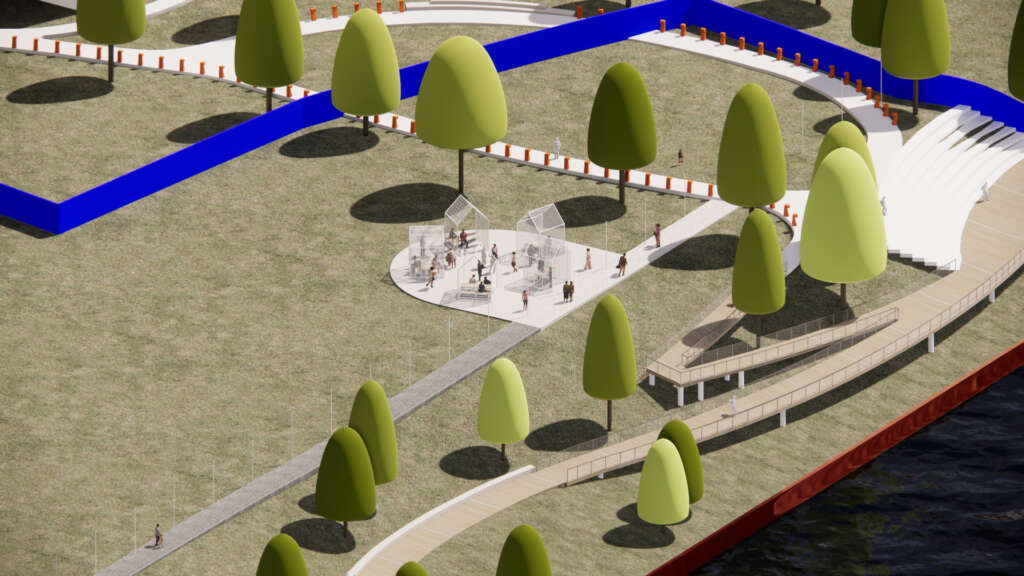
Programs and activation weekends throughout the course of the Biennial
Programming is a central piece of each edition of the Biennial and continues to be an essential cornerstone of this year’s program. This edition, site-specific installations will be programmed across dedicated Activation Weekends between September 17 and October 31. Each Activation Weekend features a different group of neighborhoods to highlight the Biennial’s installation sites to present programs including conversations, performances, and workshops.
Programs are developed in partnership and in collaboration with community organizations including neighborhood organizations, schools, local residents, and the global architects who are contributors to the Biennial. Highlights include a series presented by Xfinity featuring a performance by Norman W. Long at the Chicago Cultural Center, a program in partnership with Grow Greater Englewood called TYrone Talks, and a film screening at Overton Elementary School in partnership with the Chicago International Film Festival.
After October 31, 2021, programs will continue through the end of the year across virtual platforms and in-person in accordance with COVID/Health guidelines.
Additionally, the Biennial’s virtual program series, InDialogue, presents a new conversation every Tuesday, bringing together cultural leadership from around the world to highlight a diverse perspective and further engagement with topics related to The Available City. This year, CAB is partnering with organizations including the Association of Architecture Organizations, Chicago Architecture Center, Southern California Institute of Architecture (SCI-Arc), Exhibit Columbus, the Graham Foundation, and the Art Institute of Chicago to name a few.
For details on the InDialogue series and individual activation weekends please visit the CAB’s website and program calendar that will be consistently updated here.
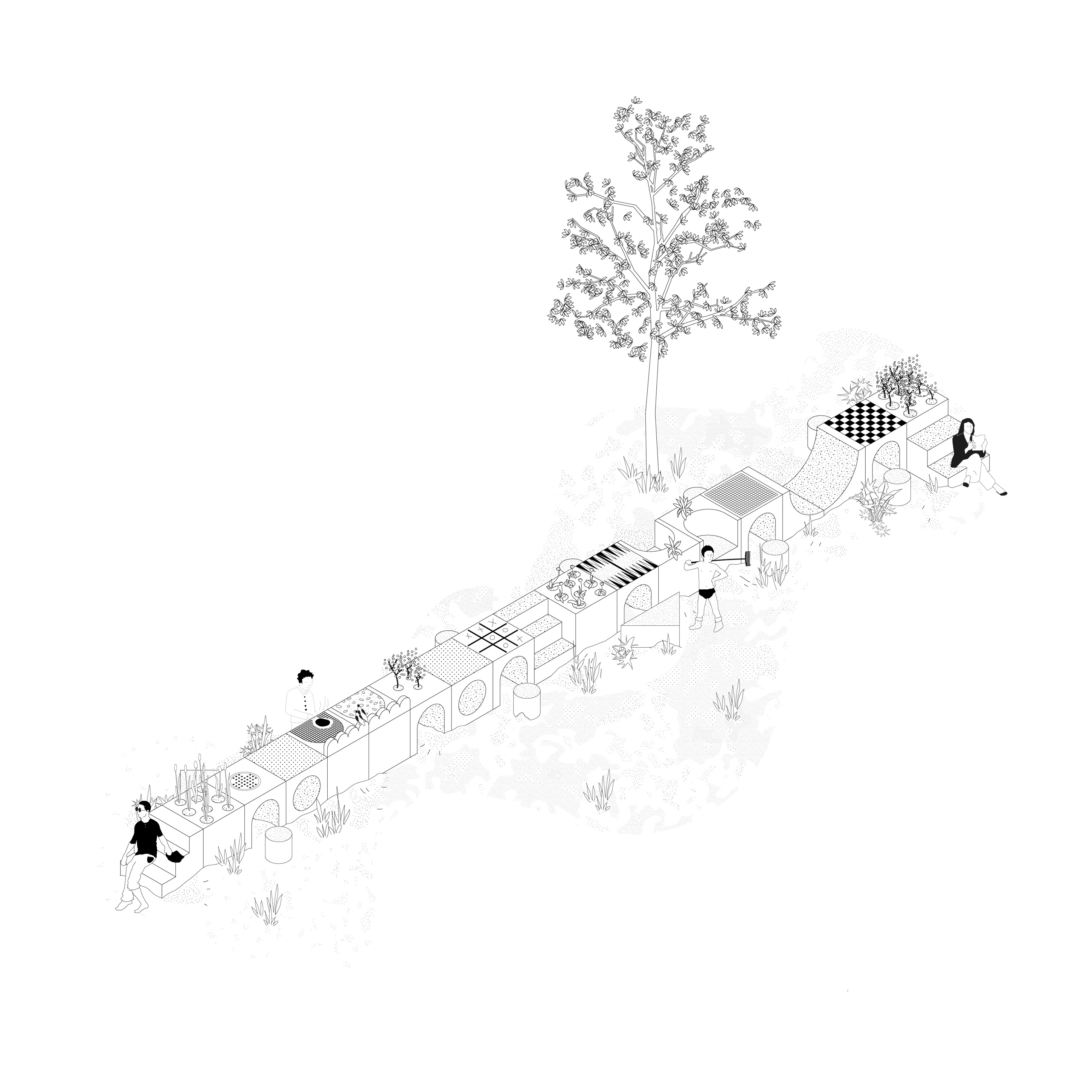
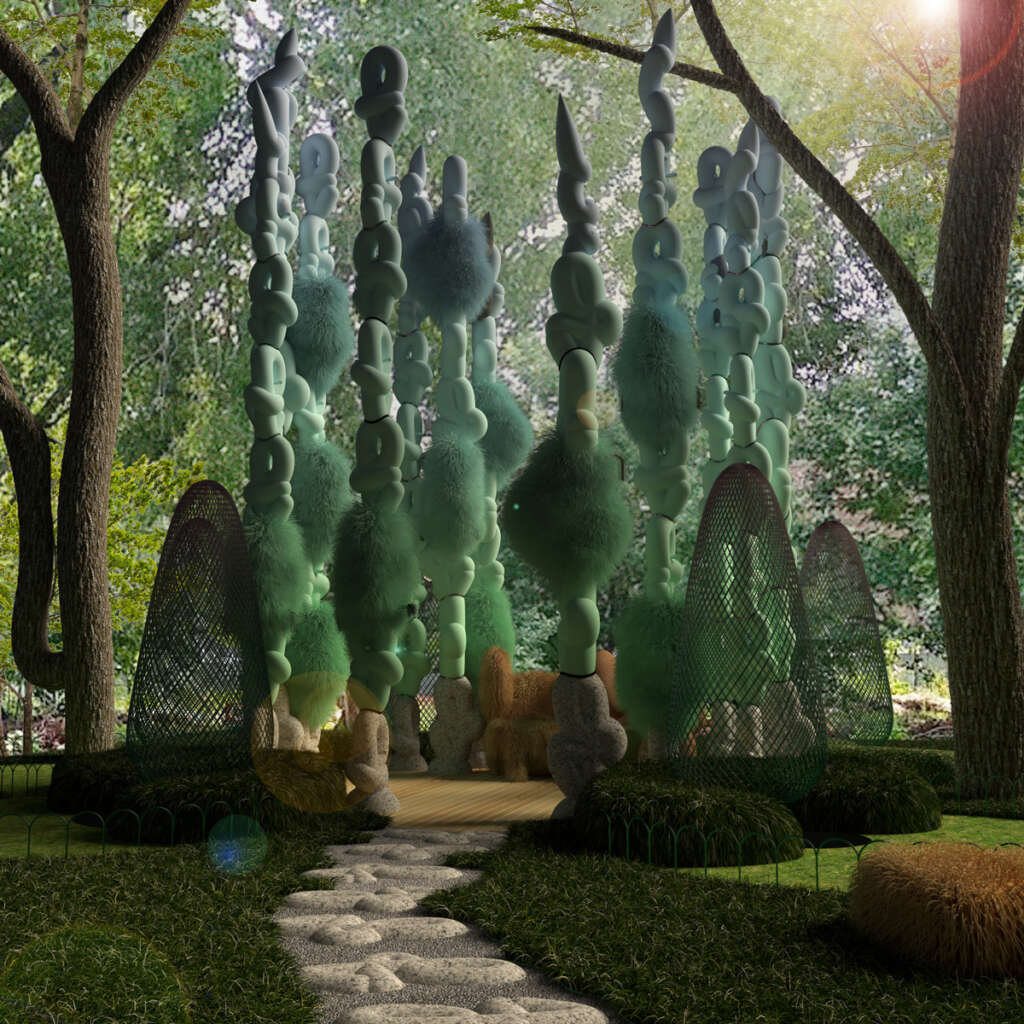
Over 100 Civic, Educational, and Cultural Partners Throughout the City
Operating in tandem with the Biennial’s central programing, more than 100 city-wide cultural partners will present programming inspired by the themes of The Available City. The programs organized by cultural partners—ranging from exhibitions to installations to lectures to performances and more—bring additional perspectives to the conversation to ensure the Biennial is inclusive and ever-changing in a diverse range of settings, venues, and communities.
Highlights include the opening of a mini-golf course by Douglass 18, a project led by the Lincoln Park Zoo, which was redesigned with a theme of bird conservation; an outdoor pavilion designed by architecture firm Skidmore Owings and Merrill (SOM) in partnership with the University of Michigan’s Taubman College of Architecture and Urban Planning utilizing robotic fabrication techniques for Epic Academy in South Shore, Chicago; and the first exhibition in Studio Gang’s new Wicker Park gallery space, exploring the Studio’s collaboration with apparel manufacturing workers co-op Blue Tin Production to transform a vacant former post office in Chicago Lawn into a new production headquarters and community hub. Additionally,
Chicago’s Department of Cultural Affairs and Special Events (DCASE) is supporting public art and site-specific cultural programs led by the Artists-In-Residence in four INVEST South/West communities.
“The Biennial represents Chicago at its collaborative best exploring ideas that resonate both locally and worldwide. The 2021 exhibition brings neighborhood leaders, our arts and cultural organization partners, and architecture and design professionals together in a dialogue which promises to enrich lives everywhere. We are grateful for the generous support of the corporations foundations and individuals who make it possible to present an array of programs, always free of charge, to visitors to our city and to Chicagoans of all ages,” said Jack Guthman, Chairman of the Chicago Architecture Biennial.




